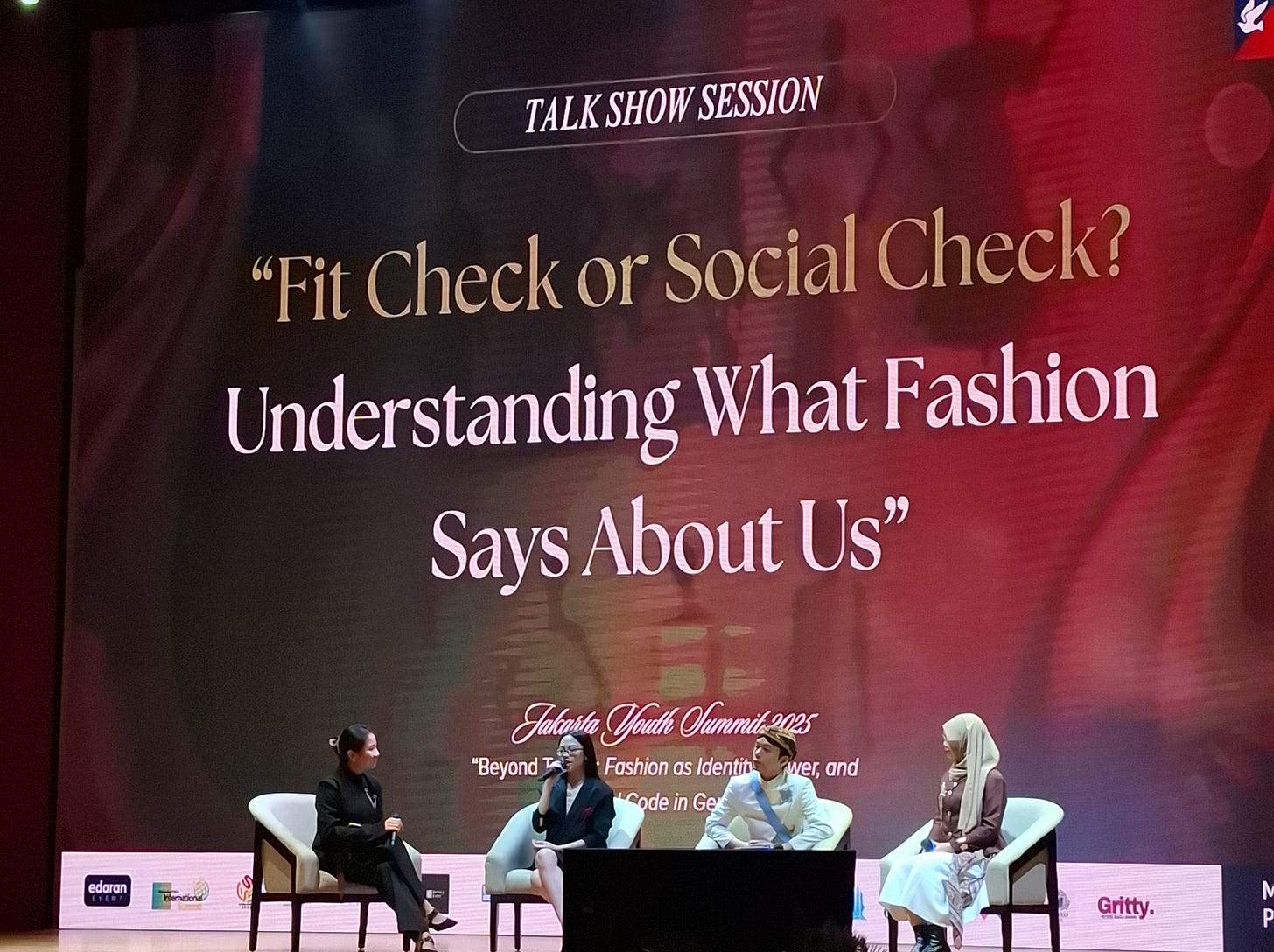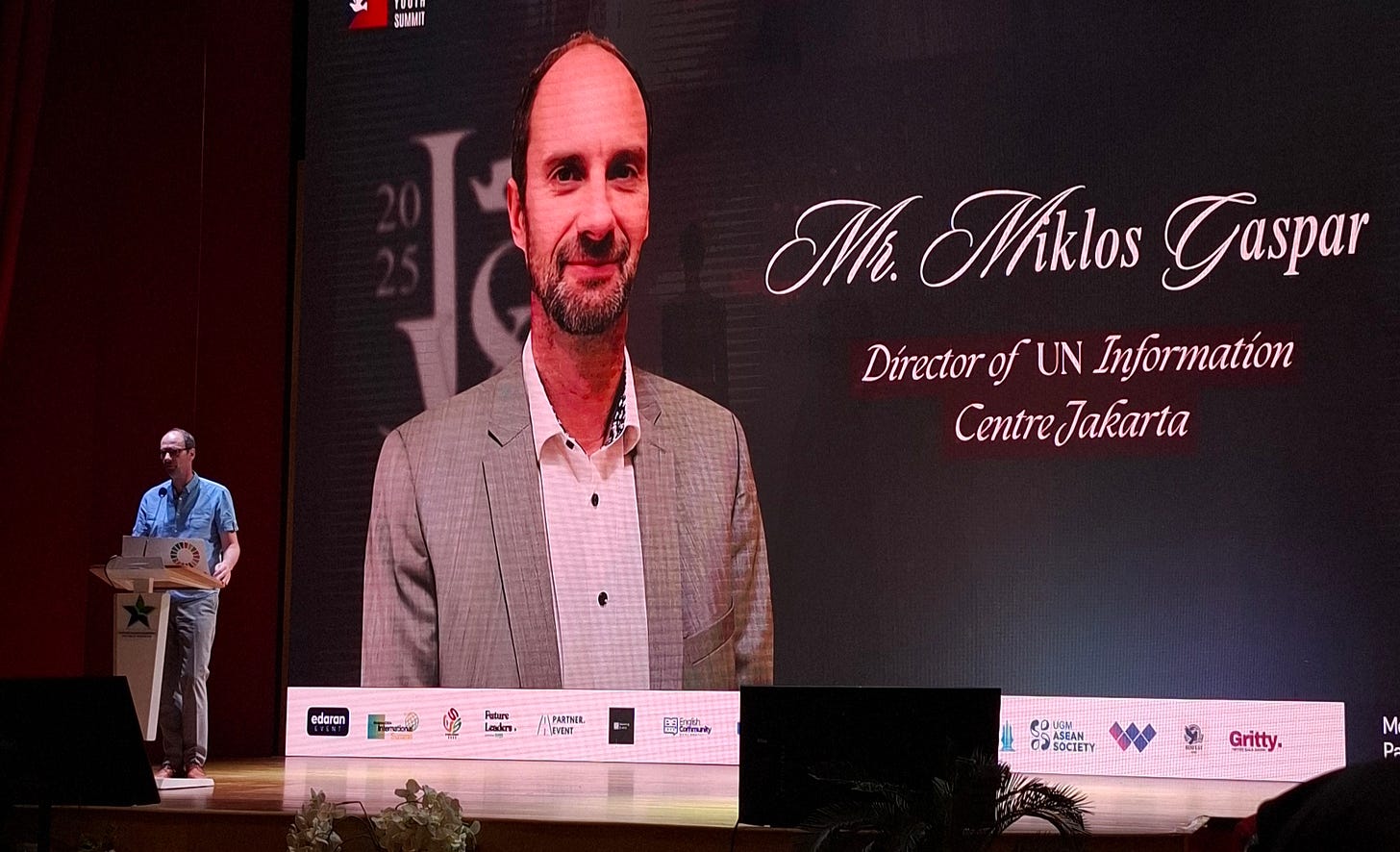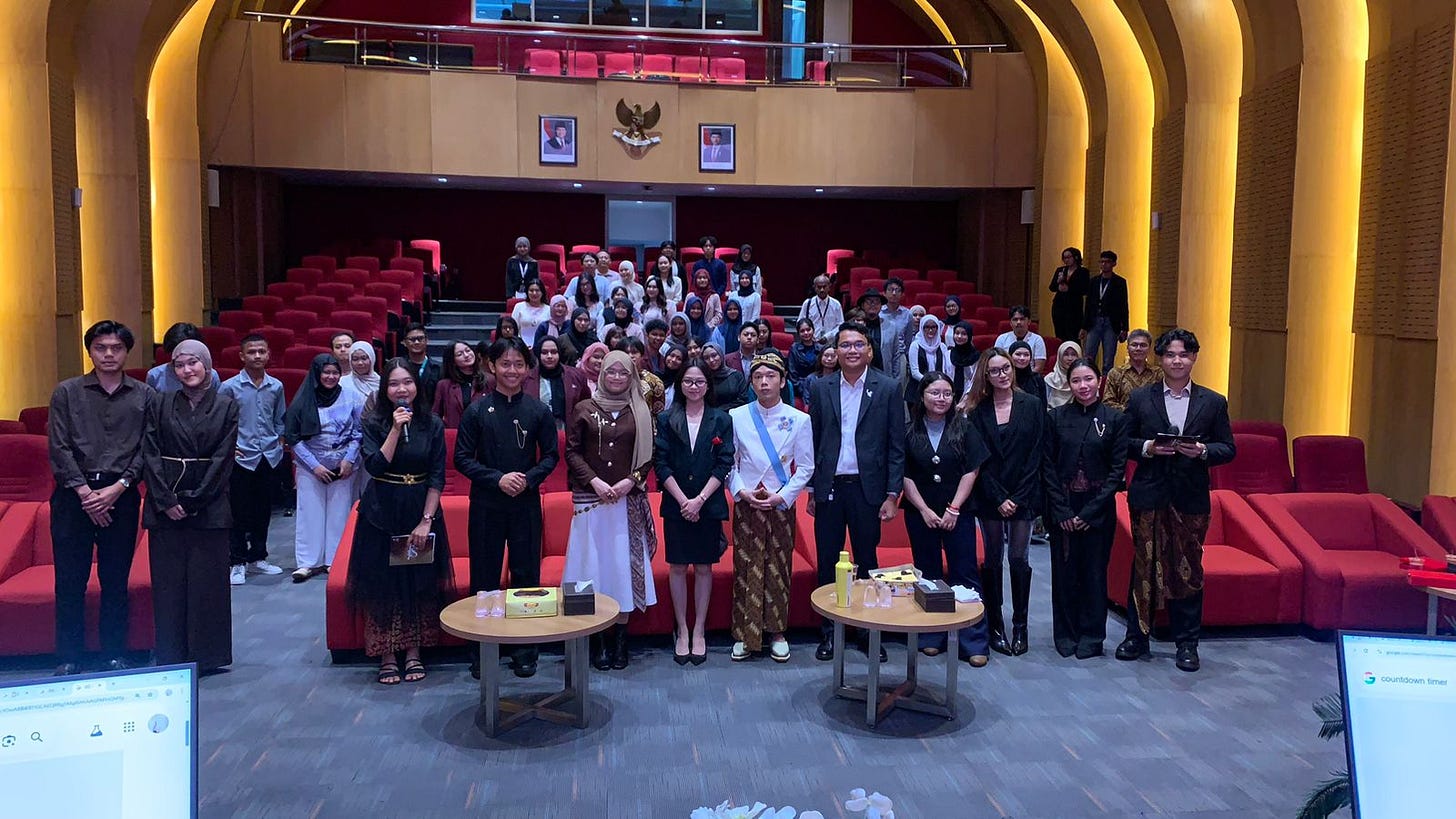What Gen Z wears, they mean: Jakarta Youth Summit 2025 redefines fashion’s role in society
Could this youth-driven forum become the blueprint for Southeast Asia’s next wave of cultural and ethical fashion activism?

🎯 The Main Takeaway
The Jakarta Youth Summit (JYS) 2025 — hosted annually by Indonesian Student Association for International Studies (ISAFIS) to spotlight contemporary issues — took a sharp turn this year by confronting fashion as a cultural, political, and environmental crisis.
Held at the National Library of Indonesia, the event shows how Indonesian Gen Z is positioning fashion not as vanity but as a framework for understanding identity, power, and social codes—and why we should pay attention.
📌 Fashion is not marginal in ASEAN:
61% of ASEAN consumers purchase fashion through live-commerce (Cube Asia, 2024)
Asia, including ASEAN — accounts for 55% of global textile exports (ILO)
Indonesia’s textile industry is valued at USD 13.83 billion in 2025, with continued growth projected (Market Report Analytics)
⚠️ Why It Matters
For Indonesia 🇮🇩
Jakarta becomes a central node where youth-led diplomacy forms.
Local conversations about fashion, modesty, politeness (unggah-ungguh), and sustainability reveal the cultural priorities of Indonesia’s rising demographic majority.
For the Region 🌏
Southeast Asian societies face mounting shifts: growing youth populations, rapid digital culture, rising sustainability concerns.
Fashion sits at the center of these changes — shaping identity, behavior, and social expectations. Yet regional frameworks rarely capture these everyday cultural signals.
Discussions emerging from JYS then offer a bottom-up model the region urgently needs.

✨ What’s Inside
Even as a national forum, JYS 2025 surfaced questions that Gen Z across the region is already grappling with. The discussions distilled fashion into three core lenses:
👑 Identity — How people use fashion to negotiate heritage, community norms, faith, and global influences.
✊ Power — How clothing shapes credibility, confidence, and the way we move through work, activism, and digital spaces.
📜 Social Code — How can people approach dress as contextual and ethical, prioritizing cultural awareness and environmental responsibility.

🌍 The Environmental Cost
Director of the United Nations Information Center Jakarta, Mr. Miklós Gáspár, shared some important points at the summit — placing Indonesia and ASEAN within global inequality cycles.
🔑 Key points:
Fashion is an environmental time bomb 💣, accounting for 9% of global carbon emissions 💨.
The world produces 92 million tons of textile waste annually.
The Global South — including Southeast Asia — is treated as the world’s textile dumping ground 🗑️.
Youth movements are now critical ✊ in resisting this pattern.
“Youth must become changemakers, including by promoting sustainability on social media. The United Nations will support this by continuing to push climate-action frameworks to reduce the environmental impact of the industry.” Director of UNIC Jakarta, Mr. Miklós Gáspár
🔥 What’s at Stake
🕊️ Future of Youth Diplomacy: ISAFIS and its flagship JYS can evolve into a model for youth-led cultural cooperation in Southeast Asia.
🔗 Pathway to ASEAN Engagement: The summit’s themes align with the ASEAN Cultural Community’s mission on heritage, ethics, and creative economy. A collaboration could bring youth into formal ASEAN cultural discussions — a gap long identified by ASEAN documents.
🧩 Regional Sustainability: Without youth-driven intervention, ASEAN risks deeper entanglement in fast-fashion waste, unethical labor, and cultural homogenization.
🖋️ Cultural Continuity: Fashion determines how younger generations carry — or abandon — traditional aesthetics, values, and etiquette.
🌐 The Regional Stakes
Each ASEAN Member State faces its own fashion–politics–culture nexus:
Brunei: Cultural luxury shaping a refined niche identity.
Cambodia: Heritage textiles reinterpreted by young artisans.
Indonesia: Modest-wear dominance and rising sustainability activism.
Laos: Traditional weaving revived by youth-led craft communities.
Malaysia: Islamic fashion tech driving modest-wear innovation.
Myanmar: Clothing used as a form of political expression and defiance.
Philippines: Craft revival shaping national and cultural narratives.
Singapore: Fashion-tech and circular economy start-ups expanding rapidly.
Thailand: Youth streetwear infused with protest symbolism.
Timor-Leste: Tais traditions gaining visibility among younger designers.
Vietnam: Textile-export powerhouse facing mounting sustainability pressures.
Jakarta’s youth signals the kind of youth-led exploration the region has been missing 🧩. They’re questioning what kind of region they are becoming 🧭.

📸 The Big Picture
ISAFIS 🕊️, a youth-led non-profit founded in 1984, continues its long tradition of creating spaces for young Indonesians to engage with global issues.
Jakarta Youth Summit is ISAFIS’ annual thematic program on contemporary challenges. Its 2025 focus on fashion 🎩👒 signals that Gen Z now recognizes clothing, identity, and sustainability as urgent social issues — not surface-level concerns.
❤️ The Bottom Line
Fashion is no longer just fashion 👗 — it’s identity, diplomacy, and environmental responsibility 🧭🌱, and Southeast Asia’s Gen Z is recognizing it clearly.
If ASEAN wants a future grounded in sustainability and cultural confidence, it must bring its youth — and movements like JYS — into the center of its cultural agenda 📣.
(AJI/JUN/VRG/BRZ/QOB)





